Last updated: May 16, 2020
The NCAEP team is compiling a list of FAQs about the NCAEP report as we receive them from the field. These will continue to be updated.
Can you tell us more about the inclusion of Sensory Integration™ as an evidence-based practice?
Sensory Integration is a new EBP in our review, and because the issues related to sensory interventions for autistic children and youth are controversial, we tried to be very specific in our report. The Sensory Integration™ therapy developed by Jean Ayres does have sufficient evidence to be identified as an evidence-based practice. It met the requirement of having two or more group design studies employing acceptable research methodology and replicated by two or more research groups. We have very explicitly stated that other sensory interventions that are not specifically SI™ by Dr. Ayres do not meet NCAEP criteria to be an evidence-based practice. These interventions include sensory diet or weighted vest interventions, which we discuss on p. 43 of the report. The findings about SI™ in our 2020 review do not overlap with the National Standards Project (NSP) review. The NSP review, last completed in 2015, does not include the 2012-2017 literature, which might account for the lack of overlap.
Do studies showing an intervention doesn’t work count against that intervention’s standing as an EBP?
In our report, we did not include studies that reported the absence of an effect, which are called null findings. For more detail about this decision see the Limitations section (p. 52) of the report. We have, however, kept track of studies meeting our methodological criteria for quality that reported null findings. The NCAEP team is working on several companion documents to the NCAEP report and one will include a summary of the studies with null findings from the full review period (1990-2017). We will continue to update the website and FAQs as documents become available.
Why don't I see PECS and PRT on the list of EBPs?
Picture Exchange Communication System® and Pivotal Response Training both have an expansive literature base and continue to meet all criteria as evidence-based practices. In an effort to provide conceptual clarity, consistency, and conciseness given the growing body of literature, we have classified some focused intervention practices as “Manualized Interventions Meeting Criteria” (MIMCs). These are intervention practices that have themselves met the evidence-based criteria AND have procedures that are very similar to other practices in a larger category. For example, PRT has procedural features that fit within the Naturalistic Intervention EBP category, so we placed PRT within that the Naturalistic Intervention category. Similarly, PECS® has features that overlap with the Augmentative and Alternative Communication (AAC) category and is placed within the AAC category. In this review there are 28 EBP categories. In addition, there are 10 MIMCs organized within those EBP categories. For more information on MIMCs and this reorganization of practices, see pp. 30, 41, and Table 4.1 in the report.
How did reviewers determine if a study was “high quality” enough to support an evidence-based practice?
Quality appraisals were completed by two independent and trained reviewers. Studies were determined to be of high quality if specified criteria were met related to the study design and procedures. If all criterion were met, the findings from the study were examined for effects. If the effects were positive, as determined by the final item on the study appraisal form, the study was included in the evidence base for a specific practice(s). Quality standards for both group and single case designs can be found in Appendix 1 & 2 (pp. 61-62 of the report) and are provided on our website: https://ncaep.fpg.unc.edu/ncaep-process .
Can studies/articles be associated with more than one EBP?
Yes, studies/articles could provide evidence for more than one EBP IF there was more than one primary intervention used (see pp. 22-23). A number of studies included a combination of EBPs as part of the primary intervention, and thus they have been identified in the list of evidence for each of the EBPs. Some common examples include a combination of Reinforcement +Prompting, Parent Implemented Intervention + Naturalistic Intervention, and Social Skills Treatment + Cognitive Behavioral/Instructional Strategies. Each EBP Brief (pp 63-143) has a full list of articles that contributed to the evidence base for each practice.
I have questions about the review process and/or about the inclusion or exclusion of a reviewed article. What should I do?
There are several ways to learn more about the NCAEP process and article inclusion and exclusion criteria:
- Review the Methods section (pp. 15-24) and the review criteria in Appendix 1 and 2 (pp. 61-62) in the NCAEP report.
- Review the “NCAEP Process” section on the NCAEP website: https://ncaep.fpg.unc.edu/ncaep-process
- Feel free to reach out to the NCAEP Team (https://ncaep.fpg.unc.edu/our-team) and/or report authors.

